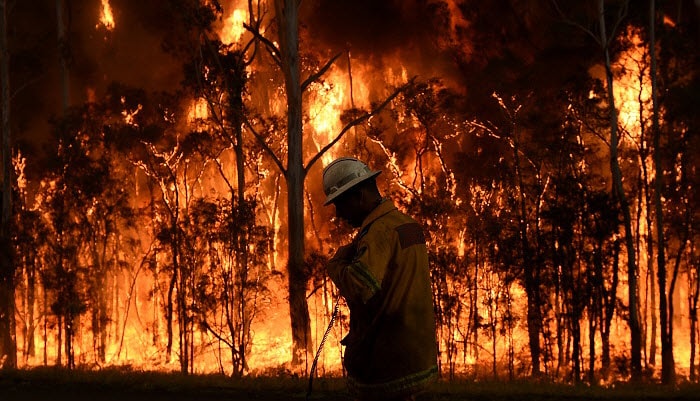BAL Report Principles: Crucial Details for Homeowner
BAL Report Principles: Crucial Details for Homeowner
Blog Article
Ensuring Bush Fire Protection Through Proper BAL Report Evaluation
In the realm of bush fire defense, the thorough evaluation of Bushfire Assault Level (BAL) reports stands as a foundation for guarding homes against the disastrous influence of wildfires. With ecological elements and residential property attributes playing considerable functions in identifying the level of risk, a comprehensive understanding of BAL ratings comes to be essential. Nonetheless, the actual essence exists not simply in comprehending these records however in analyzing them efficiently to create tailored fire protection approaches. By delving right into the significance of BAL record analysis, we uncover a realm where educated decisions pave the course towards bolstering residential or commercial property safety and security and durability in fire-prone areas.
Comprehending Bushfire Strike Level (BAL)
In the realm of bushfire defense, comprehending the Bushfire Assault Level (BAL) is vital for guaranteeing reliable mitigation methods. Recognizing the BAL rating of a residential property is critical for residential property home builders, policymakers, and owners to carry out suitable actions to secure against bushfire dangers.

Significance of BAL Report Evaluation
An essential facet in bushfire defense preparation includes the extensive analysis of BAL reports to analyze the possible dangers and identify ideal reduction methods. BAL reports provide critical details regarding the potential influence of bushfires on a building based upon different elements such as vegetation kind, distance to possible fire dangers, and slope of the land. Assessing these reports with precision is extremely important in establishing effective bushfire protection procedures tailored to the details danger account of a building.
Carrying Out Fire Protection Procedures
Executing efficient fire protection procedures is essential for safeguarding residential properties in bushfire-prone areas. Among the key methods to boost fire protection is by developing defensible room around structures. This involves clearing up flammable greenery, such as completely dry leaves and branches, within a specific distance of the residential property. Furthermore, mounting fire-resistant roof products can help in reducing the danger of embers firing up the roofing throughout a bushfire. Correctly maintained rain gutters and displays are likewise important to protect against debris buildup that might sustain a fire.
Moreover, having a appropriate and well-kept supply of water, such as a tank or pool, can assist firefighters in their initiatives to secure the residential property. It is very important to have a clear emptying plan in position and to make certain that all citizens are familiar with the treatments. Additionally, having firefighting tools conveniently available, such as hoses and fire extinguishers, can assist in dealing with my explanation small place fires before they escalate. On the whole, carrying out a combination of these fire protection procedures can dramatically enhance the possibilities of safeguarding buildings during bushfire occasions.
Mitigating Dangers in Fire-Prone Locations
To fortify residential properties versus bushfire dangers, a calculated focus on mitigating risks in fire-prone areas is necessary. One critical facet of danger mitigation is maintaining defensible space around properties by clearing flammable plant life, making sure appropriate spacing in between structures and trees, and employing fireproof landscape design methods.
Additionally, constructing or retrofitting structures with fire-resistant materials and making certain appropriate maintenance of roof coverings, rain gutters, and external cladding can significantly boost the residential or commercial property's resilience to bushfires. Creating and practicing a bushfire emergency plan with all passengers, consisting of emptying procedures and interaction techniques, is additionally essential in mitigating dangers efficiently. By adopting an aggressive technique to run the risk of mitigation in fire-prone areas, homeowner can much better secure their assets click for more and improve total bushfire preparedness.
Ensuring Property Security and Strength
Making sure the safety and strength of residential properties in fire-prone areas needs an unwavering commitment to robust preventative measures and calculated preparation. Home safety and security starts with executing efficient actions to reduce fire dangers. This consists of keeping a defensible space around the home by getting rid of combustible vegetation, guaranteeing correct upkeep of roofs and gutters, and making use of fireproof structure materials. Regular maintenance of firefighting devices, such as pipes and lawn sprinkler, is additionally crucial to residential property strength.
Durability, on the other hand, involves the ability of a residential or commercial property to endure and recuperate from a bushfire. This can be enhanced through the installment of ash guards on home windows and vents, ensuring that entry factors for ashes are reduced. Furthermore, having a well-thought-out discharge strategy and exercising it on a regular basis can substantially increase property strength. Working together with next-door neighbors and regional fire authorities can also boost the security and resilience of residential or commercial properties in fire-prone locations. By proactively attending to these aspects, property proprietors can better secure their assets and enjoyed ones from the risk of bushfires.
Conclusion
In verdict, ensuring bushfire security via proper BAL report evaluation is crucial for comprehending the More Info degree of threat posed by bushfires and carrying out essential fire protection steps. By minimizing risks in fire-prone areas and making sure property safety and durability, people and areas can better prepare for and respond to bushfire occasions. It is crucial to focus on fire precaution to protect lives and residential or commercial property in these high-risk atmospheres.
In the world of bush fire security, the careful evaluation of Bushfire Strike Degree (BAL) records stands as a cornerstone for safeguarding residential properties versus the damaging influence of wildfires (BAL Report). Recognizing the BAL score of a residential property is critical for building policymakers, home builders, and owners to implement appropriate actions to secure against bushfire risks

BAL records offer critical information about the potential impact of bushfires on a residential property based on numerous variables such as plant life type, distance to potential fire hazards, and slope of the land (BAL Report). Overall, executing a combination of these fire protection measures can considerably enhance the chances of protecting homes during bushfire events
Report this page